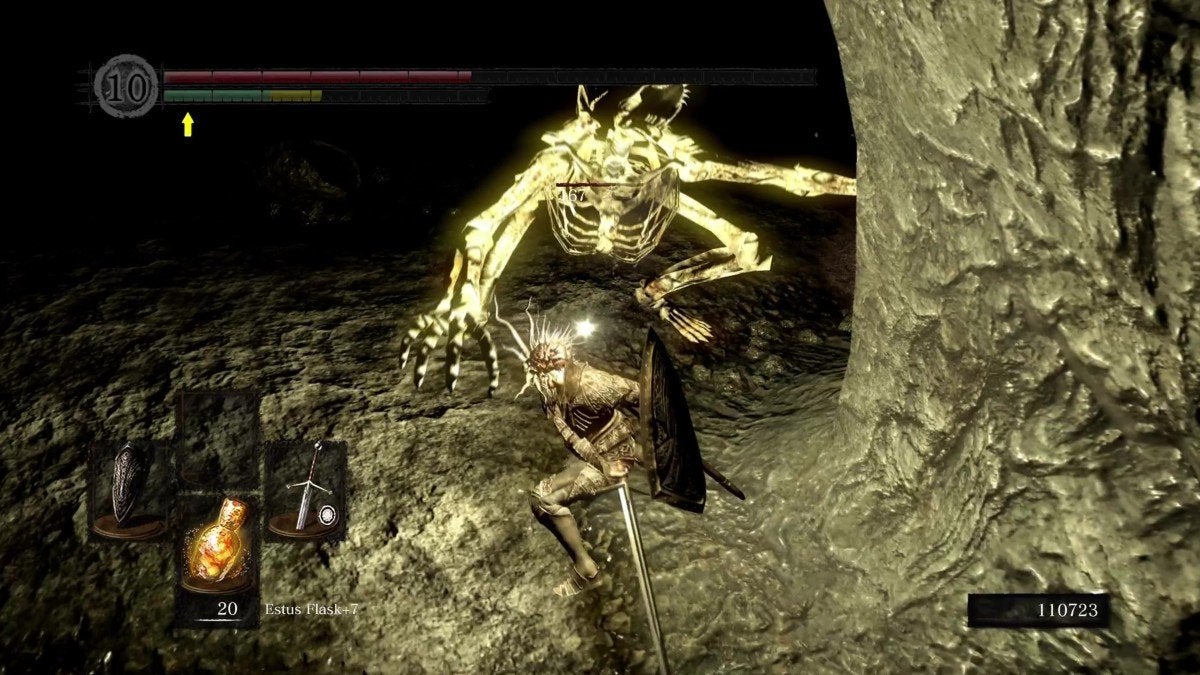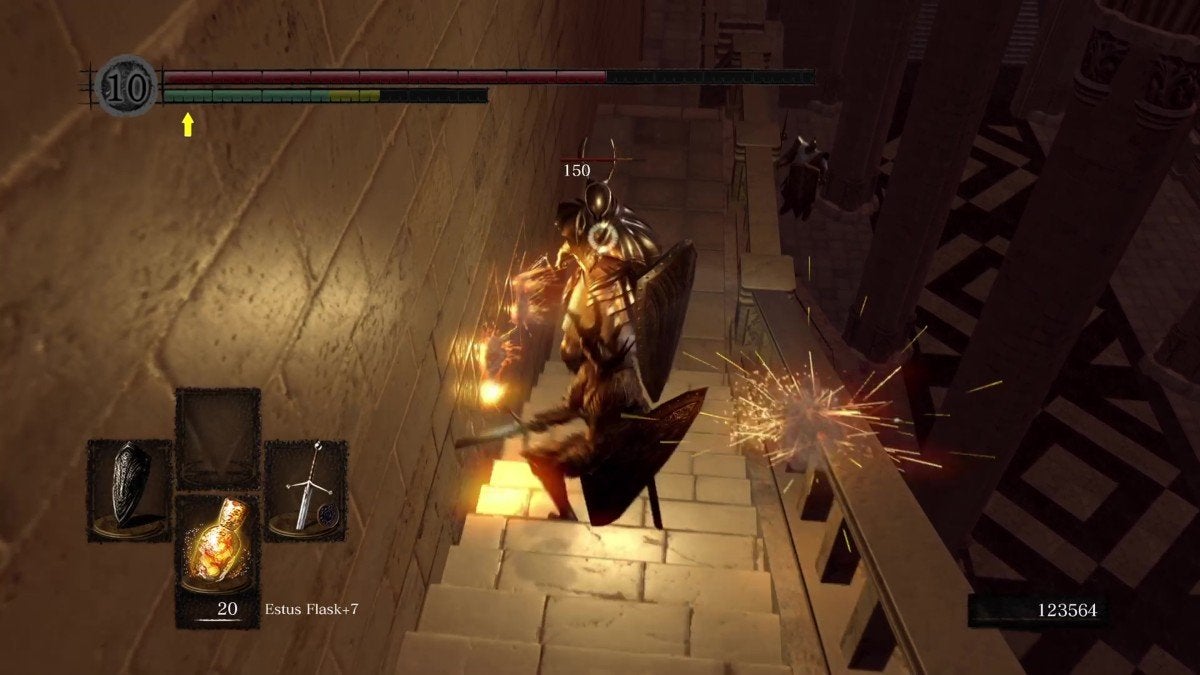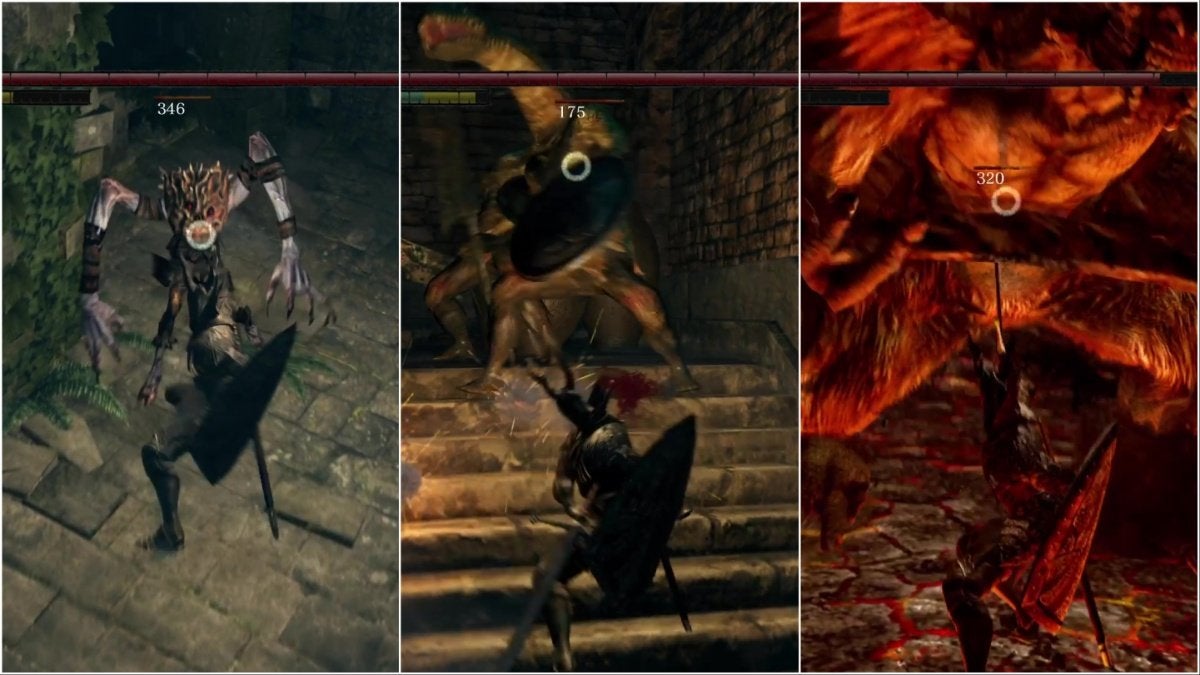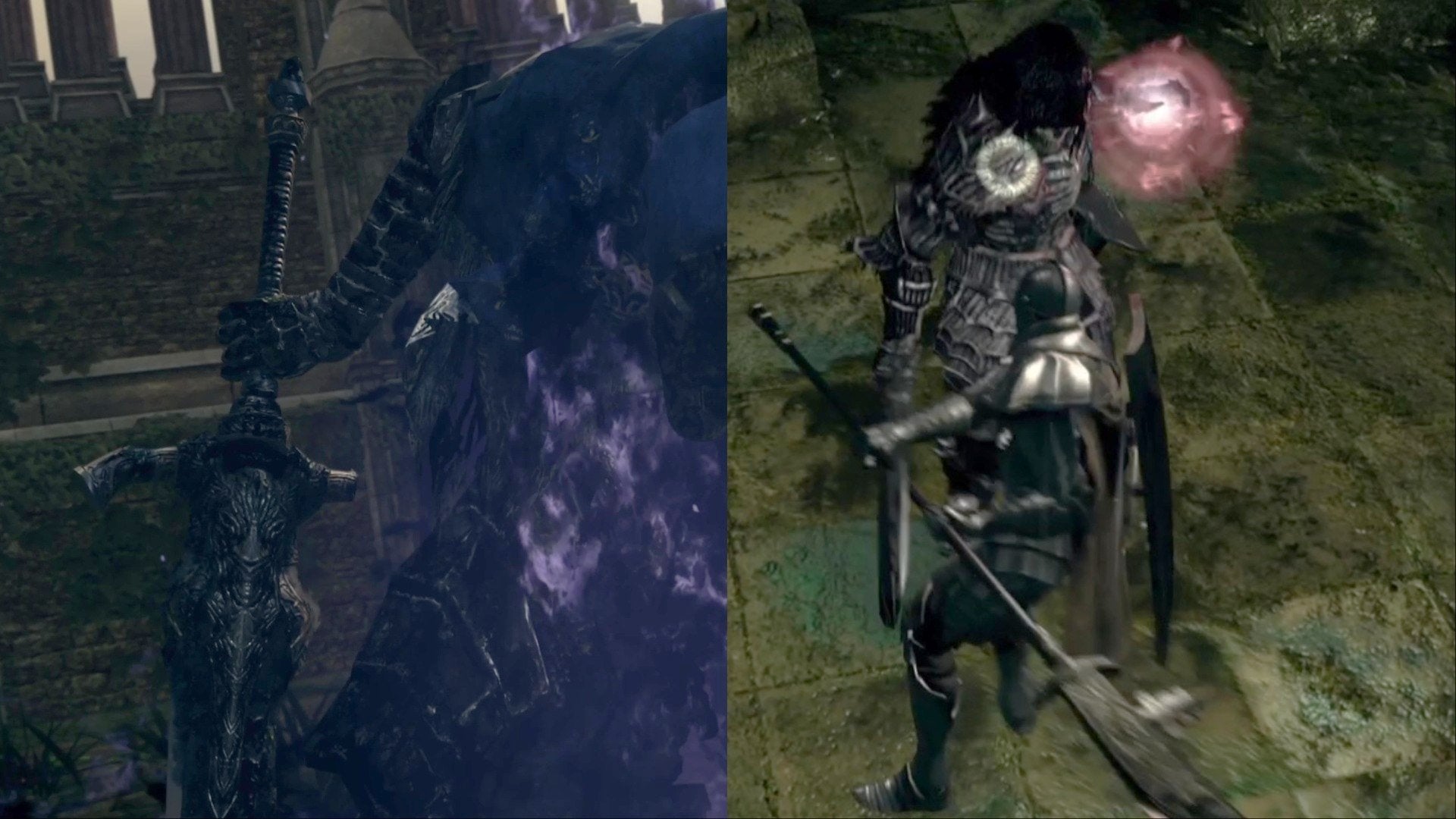![]() Key Takeaway
Key Takeaway
Divine and Occult weapons are both auxiliary effects that are great for Faith builds. Divine weapons work better against Skeleton-type enemies while Occult weapons are powerful against Knights, Sentinels, and bosses such as Gwyn and Gwyndolin.
Divine and Occult weapons are two enigmatic auxiliary effects and upgrade paths in Dark Souls. They’re a little more tricky to understand compared to the standard upgrade paths. However, when used right, the Chosen Undead becomes the bane of skeletons and gods alike.
Table Of Contents
About Divine Weapons

Divine weapons are weapons that are naturally imbued by the Divine auxiliary effect or ascended with the Divine upgrade path. Divine imbued weapons scales with Faith rather than Strength or Dexterity. Magic damage is also added to the said weapon.
Divine weapons are strong against enemies that rise from the dead. This doesn’t refer to Undead enemies that you encounter across the game, mind you. This refers to the skeletons that keep rising back after you eliminate them, as well as other skeleton-type enemies. These enemies are found in Firelink Shrine, The Catacombs, and the Tomb of the Giants.
Divine weapons also work well against Crow Demons and Masses of Souls.
There are a handful of weapons in the game that already come with this damage type. These weapons are:
- Astora’s Straight Sword
- Crescent Axe
- Grant
- Greatsword of Artorias
- Silver Knight Spear
To ascend other weapons with Divine, you’ll need to head to Andre of Astora at the Undead Parish. You’ll need a +5 Standard weapon for Divine ascension. You’ll also need the Divine Ember to turn a +5 Standard weapon into a Divine weapon, and the Large Divine Ember to fully upgrade it.
About Occult Weapons

Occult weapons share certain similarities with Divine weapons. These are also weapons that are imbued with the Occult auxiliary effect naturally or through ascension. Occult weapons also scale with Faith and come with Magic damage.
According to lore, Occult weapons are particularly strong against gods and those who follow them. In-game, this means they deal more damage to Silver Knights, Black Knights, and Sentinels. Occult weapons are also great against Dark Sun Gwyndolin, Dragon Slayer Ornstein, and Gwyn, Lord of Cinder.
The weapons in the game that are already imbued with Occult when you find them are the following:
- Dark Hand
- Priscilla’s Dagger
- Velka’s Rapier
To ascend a weapon with Occult, you’ll need the Dark Ember, which you’ll get from the Painted World of Ariamis. Give this to Andre of Astora. He can ascend +5 Divine weapons into Occult ones.
Similarities and Differences Between Divine and Occult Weapons
Both Divine and Occult weapons deal Magic damage and scale with Faith. That means these weapons are great melee options for Faith builds. Both weapon types also require the assistance of Andre of Astora if you want a weapon to be imbued by either auxiliary effect.
Divine and Occult weapons definitely have more similarities than differences. That said, to grasp the differences between these two weapons, one must look at the damage they deal with against various enemies.
Testing Damage Output

In the spirit of knowing the damage output of Divine and Occult weapons, take a look at the table below. We’ve tested the damage output for a base Divine weapon, a fully upgraded Divine weapon, a base Occult weapon, and a fully upgraded Occult weapon on three different enemies. We use the Claymore for this particular test and have a Faith stat of 25.
Our dummies for this test are the Men-Serpent, Taurus Demon, and Oolacile Bloatheads. These enemies aren’t weak nor strong against either auxiliary effects. That way, we can see how effective these weapons are against the regular enemies you encounter.
| Weapon | Man-Serpent | Taurus Demon | Oolacile Bloathead |
|---|---|---|---|
| Base Divine Weapon (light attack) | 55 - 65 | 65 - 75 | 80 - 90 |
| Base Divine Weapon (strong attack) | 90 - 100 | 110 - 120 | 115 - 125 |
| Base Occult Weapon (light attack) | 95 - 105 | 120 - 130 | 125 - 135 |
| Base Occult Weapon (strong attack) | 155 - 165 | 195 - 205 | 200 - 210 |
| Fully-upgraded Divine Weapon (light attack) | 170 - 180 | 205 - 215 | 220 - 230 |
| Fully-upgraded Divine Weapon (strong attack) | 260 - 270 | 315 - 325 | 340 - 350 |
| Fully-upgraded Occult Weapon (light attack) | 160 - 170 | 195 - 205 | 215 - 225 |
| Fully-upgraded Occult Weapon (strong attack) | 245 - 255 | 305 - 315 | 330 - 340 |
Counting the damage reduction for the enemies’ defenses, you can see that both aren’t really effective against normal enemies. However, they become increasingly powerful the more you level them up. Even against enemies that have high defense such as the Man-Serpents and Taurus Demons, both Divine and Occult weapons can deal substantial damage.
At base level, the Occult weapons seem to do more damage against our three test dummies. However, at max level, it’s the Divine weapons that are a tad more powerful.
How to Properly Use Divine and Occult Weapons
Faith builds can use Divine and Occult weapons as their melee options whenever they need a break from performing spells. However, players will find both Divine and Occult weapons much more useful in levels filled with enemies weak against either weapon type.
For example, using a Divine weapon when you explore The Catacombs and the Tomb of the Giants will make both levels way easier to navigate. These levels are filled with Skeletons, and many of them are brought back up by Undead Mages. Divine weapons prevent Skeletons from resurrecting. Use a Divine weapon when going through The Catacombs and you won’t have to rush to prioritize the Undead Mages anymore.
Occult weapons, on the other hand, are great when you explore Anor Londo and the Kiln of the First Flame. Also, Occult weapons are strong against Black and Silver Knights as well as Sentinels, which are most of the enemies you’ll face in Anor Londo. Occult weapons also happen to be strong against Ornstein, one of the bosses in Anor Londo.
The Kiln of the First Flame is exclusively filled with Black Knights before you ultimately reach the final enemy of the level and the game itself, Gwyn, Lord of Cinder. Every enemy you’ll encounter in this level is weak against Occult weapons.
Weapons that have auxiliary effects in Dark Souls can be immensely fun to use, especially when you know how to use them. That said, if you want to opt for using Divine or Occult weapons, make sure you have the right build for it. Against the ideal targets, these weapons are powerhouses. Even Ornstein and Smough will tremble before them.


